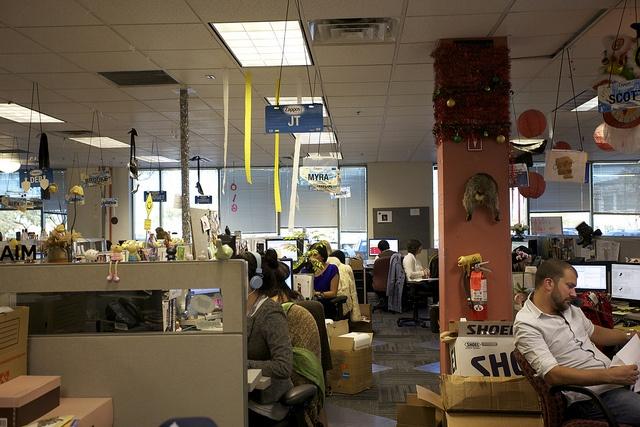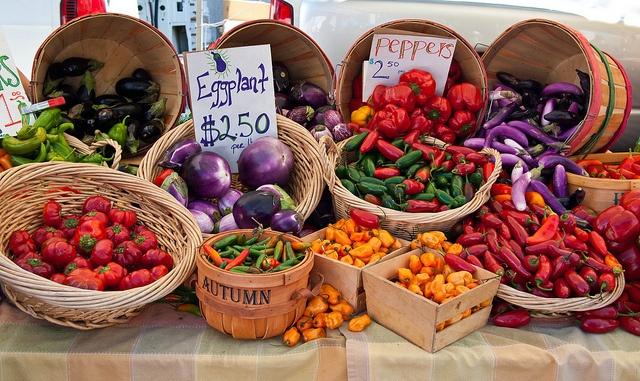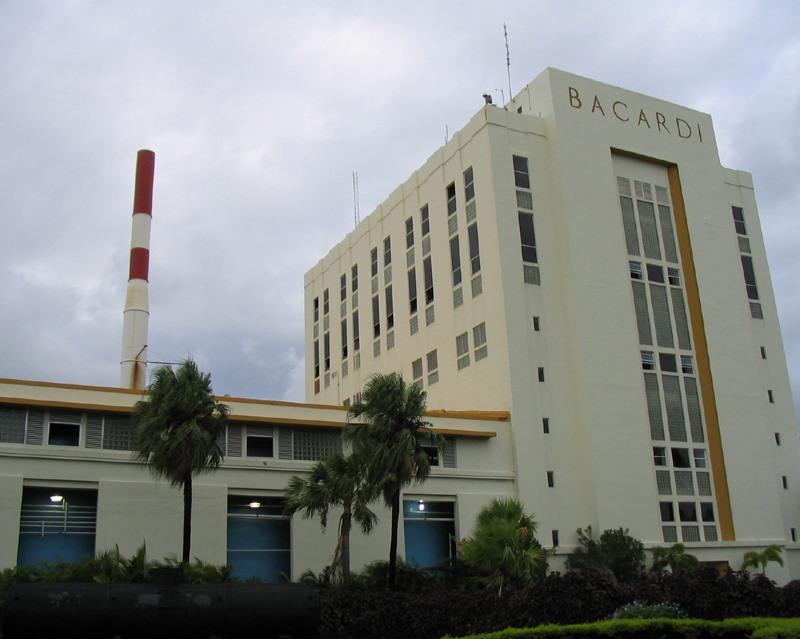The Role of the Corporate World in Sustaining the Environment


By Robert Cordray
Even though phrases like 'global warming,' 'eco-friendly' and 'environmentally-conscious' have only started to emerge over the last few decades, the real history of ecology and the environment dates back even further.
Although the history books may not mention the push for 'green,' they do mention ecological impacts that have made an enormous impact on the modern world today. But regardless of the history of environmentalism, the green movement itself has only started gathering momentum over the last half of the century. In terms of business, this has become quite apparent.
Pioneer companies
Early companies never really considered how corporate business may impact the environment. If any actual thought was given, it was only with regards to the raw resources that were readily available for use. No one bothered to consider the long-term effects of such practices. As forests were burned to the ground in the name of progress, companies set a bad example that haunts the world to this day. Even today, as more organizations and people strive to remedy the damage of the past, several companies still see the world as an expendable commodity.
Still, everyone is affected on some level in terms of environmental impact due to corporate business. Therefore, the time has come for those companies responsible for damaging the environment to be held accountable for their actions. Here are some environmentally-safe policies that every business and household should ideally adopt and follow:
Conserve resources:
- Decrease electricity waste by always shutting off lights along with any unused equipment.
- Use fuel efficient sources for transporting freight.
- Use LED lighting that promotes high-efficiency rather than traditional incandescent bulbs which produce and waste more energy.
- Use rechargeable batteries rather than wasteful disposable ones.
- Stop using disposable plates, silverware, and cups and use washable ones instead.
- Consider using renewable energy sources like solar power.
- Install air hand dryers in place of paper towel dispensers.
- Only use renewable or recyclable building materials.
- Significantly decrease paper waste by eliminating any unnecessary faxes, memos, etc., and only rely on electronic device communication instead.
- Recycle used electronics with the help of a take-back program.
- Manage the amount of disposable coveralls used on a monthly basis.
- Diminish climate control and encourage the staff to dress appropriately for the weather.
- Integrate and enforce permanent recycling practices.
- Encourage employees to telecommute and work from home in order to decrease pollution and traffic.
- Subsidize the costs for public transportation on behalf of employees.
- Arrange company carpools.
- Only conduct business with other like-minded “green” companies
- Take extra safety measures when handling any substances and materials that may potentially harm the environment.
- Only conduct business with local area farmers to decrease transportation emissions.
- Invest in more resourceful and efficient systems for material handling for production lines.
- Use new low-flow plumbing fixtures when replacing older models.
- Try to implement eco-friendly warehouse solutions that store and transport materials more effectively.
The carelessness of companies
Various companies are required to handle very dangerous and toxic substances. However, it is their sole responsibility to ensure those substances do not cause harm to the environment. Back in 2010, the hazardous BP oil spill was a direct result of careless corporate policies and money-saving tactics. As a result, an estimated amount of more than 200 million gallons of toxic oil was spilled into the Gulf of Mexico. So far, BP has been fined over $42 billion towards the cleanup effort. Even so, there’s no real way to determine the extent of the damage or how long the effects will last on the overall environment.
Taking responsibility
Businesses and corporations alike need to pay attention and learn from one another’s mistakes. Taking a shortcut in order to save money and/or time could result in damaging the environment, whether it’s visible or not. Each and every company is liable for ensuring their practices are supporting the environment in an eco-friendly manner, regardless of how much money it takes to do so. Every corporation, small business owner, and each individual on the planet must work together to heal past mistakes and strive to build a cleaner future – or someday there may not be a future.
Image credit: Flickr/wackybadger
Robert Cordray is a former business consultant and entrepreneur with over 20 years of experience and a wide variety of knowledge in multiple areas of the industry. He currently resides in the Southern California area and spends his time helping consumers and business owners alike try to be successful. When he’s not reading or writing, he’s most likely with his beautiful wife and three children.
Green Labels 101: What Labels Are Out There, and Which Ones Can We Trust?


“Energy Star,” “all-natural,” “biodegradable” and, of course, “organic” – these are just a few of the environmental claims and labels that consumers navigate as they do their everyday shopping.
“There are lots and lots of labels out there,” says Scot Case, director of markets and development for UL Environment, which provides validation for companies’ environmental claims. “One website has tracked just north of 400 different environmental labels used worldwide. That can be overwhelming and confusing for the typical consumer like my mom, as well as professional purchasers.”
TriplePundit has been delving into the issue of environmental labels – and the evidence backing up their assertions – in our “Setting the Standards” series. But we thought we’d back up and take a fresh look at the basics of green labels: What kinds of labels are currently in the marketplace, and how can consumers be sure their promises are accurate?
Types of eco-labels
Eco-labels can generally be categorized into three types, according to Case, who has worked in the environmental standards and verification field for over 20 years. First are issue-specific labels that focus on one environmental claim such as the product’s percentage of recycled content, biodegradability or energy efficiency. The Environmental Protection Agency’s Energy Star label, which identifies products that meet federal energy efficiency standards, and the U.S. Department of Agriculture’s organic seal are two of the more recognizable issue-specific labels.
The second kind – multi-attribute labels – tracks the hidden health, environmental and social impacts of a product across its entire lifecycle, from mining and manufacturing to consumer use and disposal, Case says. Green Seal is one such label for products, services, hotels and restaurants, as is UL’s own ECOLOGO program that certifies products, services and packaging.
Finally, there are broader informative tools, such as the GoodGuide, Case says, which provides ratings of a product’s environmental, health and social impacts – allowing consumers to compare the sustainability of similar products for themselves.
Another way to think about eco-labels, according to Case, is to divide them into two groups: pass/fail or graduated standards. For example, appliances and electronics either meet Energy Star standards and receive the label, or they don’t; it’s a simple pass/fail test. But in a graduated standards program like Leadership in Energy & Environmental Design (LEED), homes and commercial buildings can achieve various rankings – Silver, Gold or Platinum – based on the amount of sustainable elements they incorporate.
The truth behind the eco-label
How can consumers ensure a product or service lives up to the green assertions it makes?
“You want to make sure you find claims that have been validated by an independent third party,” Case says. “What happens in this space, unfortunately, is a company will make an environmental claim that turns out to be not quite accurate.”
Case points to a recent example in which a plastic lumber company exaggerated the recycled content of its products. Engineered Plastics Systems advertised its tables and benches as “made entirely of recycled plastic lumber” and “all recycled plastic design,” but the company offered no independent proof of this statement on its product packaging or website. It turned out that Engineered Plastics Systems’ products contained, in fact, only about 70 percent recycled plastic – a discrepancy that got the company in trouble with the Federal Trade Commission.
When evaluating green labels, you should also look for some kind of leadership standard, Case says. For example, a paint manufacturer may declare that its product emits 100 grams of volatile organic compounds per liter; that could be an accurate environmental claim, Case says, but it’s meaningless to the average consumer. What’s more useful to consumers is to know that a product met a tough leadership standard – that the paint has a GREENGUARD label, UL’s indoor air quality emissions certification program for flooring, electronics, insulation and other products.
“For consumers, what’s important is not just that there is a label [on the product,] but the substance behind the label,” Case says. “By substance, I mean independent, third-party testing based on actual scientific standards. And typically, you’re looking for a label that has some history to it and is widely recognized by consumers.”
Image credit: UL Environment
Passionate about both writing and sustainability, Alexis Petru is freelance journalist based in the San Francisco Bay Area whose work has appeared on Earth911, Huffington Post and Patch.com. Prior to working as a writer, she coordinated environmental programs for Bay Area cities and counties. Connect with Alexis on Twitter at @alexispetru
Want Better Stock Returns? Invest in Employee Satisfaction


How much is a happy employee really worth? I bet many companies still ask themselves this question, wondering what the real value of employee satisfaction is.
Fortunately, academic researchers are here to help with a new study looking at the relationship between employee satisfaction and stock returns, using lists of the “Best Companies to Work For” in 14 countries as their database. In addition, the researchers investigated how this relationship depends on the country’s level of labor market flexibility.
And the results? The researchers, Alex Edmans of the Wharton School of the University of Pennsylvania and Chendi Zhang and Lucius Li of Warwick Business School in the U.K., found out that “employee satisfaction is associated with positive abnormal returns in countries with high labor market flexibility, such as the U.S. and U.K., but not in countries with low labor market flexibility, such as Germany.”
In other words, greater employee satisfaction contributes to higher stock returns, at least in labor markets that are more flexible. The difference between the two different types of labor markets, the researchers suggest, may be due to several reasons: First, when firing is easier, employees tend to value more satisfactory jobs. Second, in low flexibility labor markets, regulations usually guarantee minimum standards for worker welfare, and hence employees are less likely to value the marginal benefit of whatever additional perks they enjoy at work.
Should we be surprised by these findings?
The answer is probably no. First, one of the researchers, Alex Edmans, already published two prior studies in 2011 and 2012 looking at the question of how job satisfaction and firm value are linked based on the list of “100 Best Companies to Work For in America,” and he found similar results. In his first study, he found that “a value-weighted portfolio of the '100 Best Companies to Work For in America' earned an annual four-factor alpha of 3.5 percent from 1984 to 2009, and 2.1 percent above industry benchmarks.” In his second study, Edmans found that “companies listed in the '100 Best Companies to Work For in America' generated 2.3 percent to 3.8 percent higher stock returns per year than their peers from 1984 through 2011.”
Second, there are also theories making the case that employee satisfaction can be a valuable motivational tool. One example this study mentions is the efficiency wage theory of Akerlof and Yellen, where they argue that "employees view a positive working environment as a 'gift' from the firm and respond with a 'gift' of increased effort.” The study also mentions sociological theories arguing that satisfied employees identify with the firm and internalize its objectives, thus inducing effort.
However, I guess some companies might be surprised, especially those who still operate according to early 20th century management theories, in which employees were considered just another form of input that management needs to extract maximum output from, at minimum cost. As Edmans notes, this approach reflects a zero-sum view, in which “satisfaction arises if employees are overpaid or underworked, both of which reduce firm value."
If this approach looks a bit anachronistic to you, just look around and see how many companies are still built on unskilled or low-skilled, low-paid employees and struggle with recognizing their employees as key organizational assets.
What the study doesn’t tell us
It’s important to note that the study is using “100 Best Companies to Work For" lists, and these lists (at least according to the American list) are based on two elements: Two-thirds of a company’s score is based on a survey sent to employees asking questions related to “their attitudes about management's credibility, job satisfaction and camaraderie,” and the other third is based on the answers to a questionnaire companies answer about pay and benefit programs, hiring practices, training, etc.
This means that while the study looks at employee satisfaction, assuming that it’s higher in companies included in the list, it doesn’t differentiate between different types of motivations. Hence, we don’t know if employee satisfaction is mainly the result of reward motivation (i.e. the company pays well, provides generous benefits and so on) or other motivations, such as autonomy, mastery and purpose, which Dan Pink describes in his book "Drive: The Surprising Truth About What Motivates Us."
Another unknown is: What is the optimal investment companies need to make in ensuring their employees’ satisfaction? We know from the study that the flexibility in the labor market is a factor (more flexibility requires more investment) but not more than that. So the debate about the value of investing in employees will probably continue -- though it would probably be less about the concept itself as much as about the degree required to reach the optimal balance, where both employees and shareholders are happy.
What does this study means in terms of sustainability?
In general I believe the findings definitely reaffirm the arguments of many in the sustainability space about the value of investing in employees in general and employee engagement in particular. However, as I mentioned, it still leaves many questions opened, as we don't know the specifics of this investment: Should companies invest more in their environment ('habitat' as Stanford’s Tina Zeelig calls it) or culture? In training? In perks? In better salary and benefits? In all of the above? I guess we’ll have to wait for the next study to get a better idea on this issue.
Another place where this study can be valuable is in investment firms utilizing SRI strategies. As the researchers show employee satisfaction is beneficial for firm value and the market does not seem to recognize this link (otherwise there wouldn’t be abnormal returns for companies that have higher rates of employee satisfaction). Add these two together and you get an opportunity for SRI firms using positive screenings, at least in labor markets with high flexibility.
And what do you think about the study findings? Do you see this relationship in your workplace? Feel free to add a comment!
Image credit: Tech Cocktail, Flickr Creative Commons
Raz Godelnik is an Assistant Professor of Strategic Design and Management at Parsons The New School of Design. You can follow Raz on Twitter.
Twitter Admits Lack of Employee Diversity, Promises Change


Seventy percent of Twitter's worldwide workforce is composed of men, and nearly 90 percent of its U.S. workers are white or Asian, according to new employment data provided by the social media company.
Women are grossly underrepresented in Twitter’s workforce, making up only 10 percent of the company’s computer programmers and highest-paid tech workers.
This is not groundbreaking news to anyone privy to the goings-on in Silicon Valley. The lack of diversity also is seen at other major tech brands such as Google, Facebook, Yahoo and LinkedIn, which is an incessant topic of debate.
In March, for example, the Rev. Jesse Jackson spoke at HP headquarters about Silicon Valley's poor record of including blacks and Latinos in hiring, board appointments and startup funding. After Twitter released its data, Jackson released a statement criticizing the company’s diversity numbers as "pathetic" but called the disclosure of the problem a "step in the right direction."
And a step in the right direction it is. Twitter is among the first major tech companies to acknowledge it has been hiring too many white and Asian men to fill high-paying technology jobs, which is commendable. The company already supports programs that teach women how to program computers, and is introducing internal training programs working to weed out biases.
"We are keenly aware that Twitter is part of an industry that is marked by dramatic imbalances in diversity," Janet Van Huysse, the company's vice president of diversity and inclusion, wrote in a blog post. “By becoming more transparent with our employee data, open in dialogue throughout the company and rigorous in our recruiting, hiring and promotion practices, we are making diversity an important business issue for ourselves.”
It is important to note that much of this lack of diversity is rooted in complex socioeconomic factors at the macro level. In other words, this is not the kind of overt discrimination or explicit bias of the 1950s. Success in Silicon Valley often is rooted in who you know more than what you know, which gives untold advantages to those who graduated from elite universities. Much of the lack of gender diversity can be attributed to the fact that only 1 out of 5 computer science majors are female.
While some might be quick to claim Silicon Valley’s homogeneity is a microcosm of the predominant inequality in the U.S., this doesn’t mean that the tech giants are off the hook. Through educational outreach initiatives starting at the elementary level, tech companies can encourage student interest in computer science in areas where the subject often goes overlooked. Scholarship programs can help underprivileged but gifted students to go to college and become part of the Silicon Valley workforce. Many argue that this might actually be self-serving, as the most successful companies typically also are the most diverse.
Image credit: Flickr hine
Based in Washington, D.C., Mike Hower is a writer, thinker and strategic communicator that revels in driving the conversation at the intersection of sustainable business and policy. He has cultivated diverse experience working for the United States Congress in Washington, D.C., helping Silicon Valley startups with strategic communications and teaching in South America. Connect with him on LinkedIn or follow him on Twitter (@mikehower)
Helsinki Mulls a Future Free of Car Ownership


With its 600,000 residents spread across 276 square miles (715 km2), the population density of Helsinki, Finland is relatively low compared to other major European cities. Buses, trams and ferries fortunately make it easy to move about the city and greater metropolitan area, but city transportation officials believe Helsinki can do even better as it continues to grow. By leveraging telecommunications and nudging the various cogs within the city’s transport system to improve their services, Finland’s capital could achieve what for now seems impossible: making car ownership obsolete.
To that end, Helsinki is considering a holistic transportation plan that would enable users to map out their route via a smartphone. True, many cities already have similar technologies enabled for residents and visitors, but in Helsinki, this would be far more seamless. Rather than paying for each leg of a trip, or requiring passes and memberships (as in for a bike-sharing program), Helsinki’s citizens would simply pay by the route, kilometer or a set monthly fee.
Sonja Heikkilä, a transport engineer at the Helsinki City Planning Department, outlines such a vision many describe as “mobility on demand.” Analogous to what we are facing with utilities (and their stubbornness towards clean energy), Ms. Heikkilä argues in her master’s thesis that while transportation is improving and has become more modern, the systems delivering them have not. As she explains, we use various tools to book travel, are quick to change telecommunications services if we perceive fees to be too high . . . and to add to that, we increasingly use the sharing economy to borrow or rent items and services that in the past we would simply buy.
Transportation as a service, not something most of us simply purchase—whether it is a car or monthly bus pass—is key such a system succeeding. In the world Ms. Heikkilä describes, a commuter may take a tram a few stops then a shared bicycle to get to the office; but in the event he or she goes to the gym or downtown to meet friends, that person can use a shared car and bus to travel that different route. The big difference—streamlined payment -- would vary sharply with systems such as the Bay Area’s Clipper Card, which is still expensive and cumbersome to use.
Such a scenario converges with a long-term trend occurring worldwide: the slow decline in car ownership. More citizens delay the scoring of their drivers’ licenses, and therefore buying cars, for several reasons: their cost and hassles, and many people now have a total lack of interest. Automobiles will never go away of course: but the fact most cars sit idle 90 to 95 percent of the time has spurred owners to rent their cars out for short trips. Other owners already reduce the cost of car ownership by sharing rides with commuters. In any event, the integration of these automobile services with other forms of transportation could render car ownership pointless by 2025, as explained in a local Helsinki daily. City officials are already working with a local Finnish company to test such a system in early 2015.
Change is already underway in Helsinki. The city recently launched its Kutsuplus service, a fleet of on-demand minibuses that allows commuters to determine their own customized routes and schedule and pay for the trip with a smartphone. Similar to the “maxi cabs” and “minibuses” in Hong Kong and collectivo routes found throughout smaller Latin American cities, these mini buses cost more than scheduled public transportation services but far cheaper than taxis.
Much needs to change in order for Helsinki to accomplish this plan. The regulatory environment needs to adapt, telecommunications systems must work as flawlessly as possible and various transportation agencies need to work together—the latter of which bedevils regions such as the greater New York and San Francisco Bay areas, where the myriad of transport agencies often work more as fiefdoms than public services. Furthermore, ingrained attitudes resulting from what is now century-long history of car ownership will make it hard for many citizens to change their habits. But as transport becomes more modern and more of us become comfortable with the concept of shared transport, scenarios such as what is planned in Helsinki could catch on throughout Europe: and maybe even this side of the pond.
Image credit: Visit Helsinki
Leon Kaye has lived in Abu Dhabi for the past year and is on his way back to California. Follow him on Instagram and Twitter.
How Can We Fix Our Broken Food System? Start With the Base of the Supply Chain


By Don Shaffer
Social equity in the food supply chain was a strong thread running through the annual Sustainable Agriculture & Food Systems Funders forum this June in Denver. If we’re going to fix our broken food system so that it delivers healthy food to the whole population while enabling farmers to make a decent living, we’ll need new models and alternatives across the entire supply chain.
The most potentially transformative enterprises, however, often face the greatest funding hurdles. The forum’s theme, “Stronger Together,” reflects a growing recognition that collaborative funding strategies involving investors, foundations and communities are essential to getting these types of enterprises off the ground.
We know this approach can work. A growing number of social enterprises supported by what we call 'integrated capital' are successfully addressing problems related to food production, processing, aggregation and distribution in ways that contribute to social equity and agricultural sustainability. They’re flying under the media radar, but they’re worth examining as models for the field.
Real progress on tough challenges
Problems at the beginning of the supply chain — dwindling agricultural land, fewer farmers, lack of access to production facilities, and missing distribution links between metropolitan areas and their surrounding farms — are among the most difficult to solve. But several enterprises we’ve worked with in these areas have made real progress.
Viva Farms: Cultivating new farmers
In terms of food production, the biggest hurdles are affordable access to land near consumers and the need to encourage and train more people as farmers (the average age of farmers in the U.S. is 57). Viva Farms, an incubator program operating on 33 acres in Washington state’s Skagit Valley, addresses both issues, working with a mix of highly skilled migrant farm workers who have no access to land or capital and young, educated urbanites who have little agricultural experience. Viva Farms gives these new farmers training in sustainable farming practices, small land parcels with shared infrastructure and marketing support.
The goal is to transition the farmers from incubator to farm ownership with secure long-term prospects. Once farmers establish stable agricultural enterprises at the incubator, Viva Farms helps them relocate to new land and expand operations via a loan fund that provides affordable start-up and growth capital. Start-up costs for beginning farmers in the Valley can range from $30,000 to $500,000; with Viva Farms’ support, farmers’ costs drop to less than $5,000.
The program, launched in 2009, has provided training to about 250 people and launched 15 farm businesses that produce on more than 70 acres.
The primary challenges for the Viva Farms model are maintaining and expanding capital for land purchases and national immigration policy. Migrant farm workers who have the skills and desire to be the next generation of farmers often are hindered by their immigration status. Even if they personally have legal status, an immediate family member may not, and the ever-present possibility of deportation makes it difficult to invest for the long term.
Common Market: Restoring links to farmland
Tatiana Garcia-Granados and Haile Johnston created Philadelphia-based Common Market in 2008 when they realized they could address two pressing problems — threatened farmland and fresh food-deprived urban communities — by restoring the distribution link between Philadelphia and Delaware Valley farms that disappeared with the rise of global commodity agriculture. Their key insight was the value of cultivating institutional customers.
Supplying hospitals, schools and other high-volume buyers allows Common Market to give farms significant and immediate new income, and targeting institutions that serve a cross-section of the population allowed the enterprise to reach people who didn’t already have access to fresh food through farmers’ markets and high-end retail.
Common Market has grown rapidly, last year expanding to a new 73,000-square-foot facility and currently supplying 220 customers — institutional kitchens, retailers, restaurants and buying clubs — with produce, dairy and meat from more than 75 sustainably-run regional farms.The enterprise’s greatest challenges (both overcome) have been obtaining credit to address an inherent cash flow gap — institutions typically pay in 60 to 100 days, but farmers need to be paid in about 15 days — and growth financing for their new facility.
Regional Access: Collaboration for fair pricing
Ithaca, New York–based Regional Access was a social enterprise before the term existed, starting in 1989 with one truck; it’s now a multifaceted distribution and logistics company serving 600-plus regional and national grocery stores, restaurants, buying clubs, institutions and small natural-food stores throughout New York state.
Regional Access provides sustainably-farmed produce, grains, meats, dairy and prepared foods from more than 150 regional farms and small-scale producers. The company stands out for its collaborative work with producers on marketing, packaging and developing transparent value chains: pricing structures that get products to market at prices that are fair to everyone involved.
Regional Access has an aggressive growth strategy with an eye toward opening a satellite facility closer to key markets. The company is clear-eyed about the challenges it faces, however. Its intensive, long-term effort to assist producers and educate buyers increases overhead. At the same time, growing interest in good, local food has led to a proliferation of supply-chain businesses. Dana Stafford, president and general manager of Regional Access, believes continued success in a highly competitive marketplace will require partnerships with natural allies.
Common threads
Several common themes in these successful models reveal essential elements in building an alternative food supply chain:
- An innovative mix of funding from a variety of funders. For example, Viva Farms was financed with a series of grants, loans and loan guarantees from RSF Social Finance, RiverStyx Foundation and the Seattle Impact Investor Fund. Common Market has tapped a similar mix of funding sources, with participation from the W.K. Kellogg Foundation, the Claneil Foundation and the 11th Hour Project, as well as RSF. Our loan to Regional Access for its new facility was made possible by a loan guarantee from the Park Foundation.
- Desire to create a model and a commitment to sharing knowledge. These attributes help spread effective practices and attract funders that want to drive social change and therefore are willing to go above and beyond to help the enterprise succeed.
- Attention to the needs of both farmers and consumers. You can’t force consumer markets; at the same time, approaches that serve consumer interests at the cost of farmers only exacerbate deep supply chain problems.
- Insight into food system breakdowns in the community. Resilient food systems are based on community needs, resources and knowledge. Even the best model has to be tailored for local circumstances.
Don Shaffer is president and CEO of RSF Social Finance, a San Francisco–based organization that lends money to path-breaking social enterprises, provides impact investing vehicles accessible to a wide range of investors, manages grant funds and works to build a finance infrastructure that will allow social enterprises to thrive.
Redefining Gross Domestic Product to Account for Sustainability


Editor's Note: This post originally appeared on CityMinded.org.
By Meghna Tare
In 2010, Carmen Reinhart and Ken Rogoff published a study “Growth in a Time of Debt” that became one of the most famous, most talked about economics papers since the financial crisis. In an era of economic recession, it answered a basic question everybody was asking: How much debt is too much? They had a number: 90 percent.
According to their study, countries above a debt-to-GDP ratio of 90 percent grew much more slowly than countries below this ratio. It was all glory for these two Harvard professors until a 28-year-old grad student and his professors published a startling finding: Reinhart and Rogoff had made a simple Excel error in one part of their study. The authors of the new critique also questioned other elements of the study and argued that, in fact, there is no healthy debt threshold.
Countries are ranked by GPD or GDP-per-citizen, implying that countries with higher rankings are doing better overall than countries with lower rankings. But GDP doesn’t actually tell us much about the value of natural capital, like clean air or healthy forests. Such natural goods and services, despite their great economic contributions, are largely viewed as free. We need a better metric that accounts for not only monetized economic wealth but, more importantly, includes vital environmental and social factors. GDP is an inaccurate representation of a nation’s wealth, but could be improved with a more holistic approach.
Redefining Gross Domestic Product (GDP)
So why not incorporate sustainability into the equation while calculating the nation’s GDP? Gross domestic product, or GDP, measures goods and services produced in a given country in a given period, with a focus on growth. The calculation ignores the value of natural capital, like clean air, clean rivers, or healthy forests. Such natural goods and services, despite their great economic contributions, are largely viewed as free.
GDP also doesn’t measure things that are good for our economy and society, like home production and volunteer work, and does not count impacts like pollution. GDP also fails to reflect the quality of economic activity, which means that increased manufacturing output, which often produces toxic chemical and gases, always counts as a positive in the GDP calculation.
Natural capital on the balance sheet of earth
As Paul Hawken writes in his book “Natural Capitalism” conventional economic theory will not guide our future for a simple reason: we have never placed natural capital on the balance sheet of Earth. Incorporating metrics beyond GDP offers a more holistic view of economic growth and would begin to shift our economic growth in a way that is more sustainable, and the benefit of environmental sustainability would finally be measured and accounted for.
There is a lot of momentum behind the idea of moving beyond GDP. The World Wildlife Fund launched the Natural Capital Declaration at Rio+20, the United Nations Conference on Sustainable Development to “measure what we treasure.” The declaration is a global statement demonstrating the commitment of the financial sector to work towards integrating natural capital criteria into financial products and services.
States like Maryland and Vermont have adopted a metric called the Genuine Progress Indicator (GPI) as an alternative to GDP. Vermont is the first state to legislate the use of GPI and use it as a policy tool to identify public policy priorities. In Maryland, the GPI is a composite of 26 indicators in three categories: economic, environmental, and social.
Inclusive Wealth Index
The United Nations Environment Program (UNEP) proposed an index called the Inclusive Wealth Index (IWI) designed to augment GDP as a measure of economic progress. The first ever Inclusive Wealth Report 2012 was released in June at the Rio+20 Conference in Brazil. The report was a joint project of the U.N. University International Human Dimensions Programme (IHDP) on Global Environmental Change and UNEP. The IWI adds natural capital to the list of economic measurements in a bid to assess the sustainability of a country’s growth. The IWI highlights nuances in different countries evolving wealth by incorporating the changes in the produced capital (machinery, buildings, etc.), human capital (education, health, etc.) and natural capital (natural resources, land, etc.).
Brazil and India are growing economies. Between 1990 and 2008, the wealth of these two countries as measured by GDP per capita rose 34 percent and 120 percent respectively. But if you move away from the myopic focus of GDP and calculate the natural capital — the sum of a country’s assets, from forests to fossil fuels and minerals – actually declined 46 percent in Brazil and 31 percent in India, according to the report.
Norway’s GDP has increased by 51 percent during 1990-2008, but due to its consumption of natural capital like oil and gas; their growth has risen by only 13 percent when measured by Inclusive Wealth Index. Conversely, Germany’s GDP increased by 30 percent, but because of their massive investment in human capital their IWI increased by 38 percent. Japan was the only country who natural capital did not decline due to an increase in forest area.
Incorporate IWI into the planning process
Recommendations from the Inclusive Wealth Report 2012 include incorporating the IWI within nations’ planning and development ministries for making of sustainable policies and increased investment in renewable natural capital like reforestation or preventing erosion. As we reach planetary boundaries, endless growth and consumption is not the answer. Economics dictates that we need progress, but we cannot have progress without measuring what we value, even if it isn’t monetized.
Meghna is the Director of Sustainability for University of Texas at Arlington. She has initiated and spearheaded many successful cross functional sustainability projects related to policy implementation, buildings and development, green procurement, transportation, employee engagement, waste management, and carbon management. She is also an MBA Candidate at the Presidio Graduate School. She has a sunny and positive attitude about life and all of its adventures. She enjoys traveling, hiking, reading, and building relationships with friends and co-workers. You can connect with her on LinkedIn.
Recycling is Built Into Bacardi


Recycling old materials is built into Bacardi Limited, the largest privately-held spirits company in the world, and is part of the company’s history. Bacardi founder, Don Facundo Bacardi Masso, opened his first distillery in 1862, and repurposing old whiskey barrels was part of his original plan. Flash forward to the present, and Bacardi is still recycling. Bacardi Bottling Corp.’s 92-acre Jacksonville, Florida site recycles materials used to bottle Bacardi rum. The site is the only bottling plant for Bacardi rum branded products sold in the U.S. A variety of materials are recycled at the bottling plant including glass, plastic, aluminum, paper and wastewater.
Bacardi also focuses on reducing the weight of its packaging and reducing hazardous waste. Packaging makes up about 57 percent of its spending on raw materials, totaling about 400,000 tons. Packaging is also responsible for half of the company's extended carbon emissions, which include emissions from its own operations and those of its suppliers. Since 2008, Bacardi has reduced the weight of its packaging by 23,000 tons, a 7.1 percent reduction. The company’s hazardous waste decreased by 1.5 percent in 2013.
Part of Bacardi’s Good Spirited sustainability program is to prevent landfill waste at all of its production sites by 2022. In 2013, 98.6 percent of its waste was recycled, reused or recovered. Bacardi launched the Good Spirited campaign in February in the more than 150 markets where it sells its brands, which include over 75 offices and 27 manufacturing and bottling facilities. Long before the launch of the Good Spirited program, the company started tracking its global environmental impacts in 2006, and since then has reduced nonrenewable energy use by 27.5 percent, greenhouse gas emissions by 28.5 percent and water use by 50 percent.
"Every single thing we do is to divert waste from landfills," explains Jacksonville-based Operations Development Manager Jennifer Eckberg. "It's the right thing to do."
Bacardi Limited has set three main sustainability goals:
- To source raw materials and packaging from sustainably sourced, renewable or recycled materials. The goal is to source 40 percent of the sugarcane-derived products used to make its rum from certified, sustainable sources by 2017, and 100 percent by 2022.
- To reduce the packaging for its products. The goal is to reduce the weight of its packaging by 10 percent by 2017, and 15 percent by 2022.
- To reduce water use and GHG emissions. The goal is to reduce water use by 55 percent by 2017 and GHG emissions by 50 percent.
Other sustainability measures include increasing renewable energy use and energy efficiency: Bacardi's rum facility in Puerto Rico is powered with wind power, while hydro-energy powers its Martini vermouth production facility in Italy. The historic Laverstoke Mill in England is turned into a green-certified distillery for Bombay Sapphire gin that will be powered with biomass and hydro-electricity. An energy efficient blending and shipping center is created in Scotland for Dewar’s and William Larson’s Scotch.
Image credit: PR BacardiCathedralOfRum
Metal Roofing: An Unlikely Way to Reduce Waste and Save Energy


By Paul Kazlov
As consumers become more educated about the need for sustainable living, many homeowners and homebuyers are prioritizing eco-friendly living in their home purchases and renovations. To meet the public outcry for conservation, recyclability and sustainability, those in the home improvement and construction industries are seeking solid alternatives that will adhere to even the most rigorous standards of eco-friendliness and sustainable living. Of the various home improvement green solutions, metal roofing is definitely one that is gaining great popularity even among the most skeptical homeowners and buyers.
The rise of metal roofing
Made of various metal materials — such as tin, aluminum, copper, and galvanized steel — metal roofs are known to withstand some of Mother Nature’s most wicked rages. Be it heavy rainstorms, hailstorms or snow, metal roofs will keep homeowners safe and away from the elements. In addition to being fire-resistant and impervious to the most unforgiving weathers and troublesome pests, metal roofs are also an environmentally friendly roofing solution for their superior energy-saving features, unmatched longevity and high recyclability.
Energy efficiency
Considered a 'cool' roof, metal roofs are an energy efficient roofing solution that will save homeowners up to 40 percent in their energy expenditure. Using a solar spectrum reflectometer and an emission meter to conduct a three-year study on the energy efficiency and service life of metal roofing systems, Oak Ridge National Laboratory’s Buildings Technology Center found that the high solar reflectivity and emissivity levels of cool metal roofing can greatly mitigate urban heat island effects. Moreover, while white coatings on other roofing materials displayed a 25 to 40 percent drop in their initial reflectance, the metal roof tested retained most of its initial solar reflectance during the study. In fact, researchers found that pre-painted metal was able to keep almost 95 percent of its reflexivity.
Another study showed that an unpainted metal roof demonstrates a very high solar reflectance level that usually exceeds the minimum federal Energy Star requirement of 60 percent. Depending on the color of a painted metal roof, the reflectance range can go anywhere from 10 percent to 75 percent, which is definitely better than the 5 percent to 25 percent range of an asphalt roof. As a recent case study on the trend of cool metal roofing in North America points out, dark colors can absorb significantly more solar radiation than light ones. Therefore, switching to a white or light-colored metal roof will not only reduce energy spending by 20 percent, but also make your home 50 to 60 degrees cooler than a conventional dark-colored roof.
Longevity
Metal roofs outperform other roofing materials in longevity and durability. According to the Metal Roofing Alliance in Belfair, the typical service life of a metal roof is two to three times longer than that of asphalt shingles. As Building Owners and Managers Association (BOMA) research finds, metal roofs have a significantly longer expected service life than all other roofing materials.
Metal roofs are also malleable and can be pressed and shaped without suffering any break or crack. Lasting considerably longer than the average 15 to 23 year service life of asphalt shingles, a metal roof can last up to 60 years and beyond. Combined with its minimal upkeep, it is no wonder that homeowners love metal roofs for their generous financial savings in roofing repair and replacement.
Recyclability
Finally, the unmatched recyclability of metal roofs makes them a favorite of many “green” enthusiasts. According to research conducted by the Florida Department of Environmental Protection (DEP), metal roofing is one of the most eco-friendly roofing solution from a waste-reduction standpoint.
Many metal roofs contain up to 40 percent recycled steels, while the content of metal roofs in itself is 100 percent recyclable. As a result of its high recyclability and reusability, metal roof materials rarely become waste in a landfill. When compared to Environmental Protection Agency’s (EPA) estimation of 11 million tons of asphalt shingles ending up in landfills, it is clear why those in the government agency and home improvement industry are calling metal roofing an eco-friendly solution for every homeowner.
Public interest in green homes
Metal roofing, as a recognized green home product, is a cost-saving and energy efficient investment. As Home Guides.com reports, metal roofs are commonly known for improving home value by 1 to 6 percent.
The trend for going green is not slowing down anytime soon. In fact, research done by various groups has unanimously found a growing interest in eco-friendliness and sustainable living among both homeowners and buyers. According to a study conducted by the National Association of Realtors, an overwhelming number of homebuyers are making energy efficient appliances, lighting and other home accessories the top priorities in their home purchases. Of the surveyed homebuyers, 94 percent are looking for Energy Star rated appliances, while more than 90 percent explicitly declared their desire to have an Energy Star rating for the whole home.
In a different survey, the National Association of Home Builders also found that 94 percent of existing 'green homeowners' would recommend a green home to a friend. As the public moves forward to a more sustainable lifestyle, we are expecting to experience a rise in metal roofs among both commercial and residential buildings.
Image credit: iscatel, Fotolia
Paul Kazlov is a “green” home remodeling enthusiast and an industry pioneer for innovation in home renovation. Paul writes for the Global Home Improvement blog and strives to educate people about “green” products such as metal roofing and solar. Follow him on Twitter @PaulKazlov
Tobacco plant biofuel takes off with Boeing and SAA


Boeing, South African Airways (SAA) and SkyNRG are collaborating to make sustainable aviation biofuel from a new type of tobacco plant.
SkyNRG is expanding production of the hybrid plant known as Solaris as an energy crop that farmers could grow instead of traditional tobacco. Test farming of the plants, which are effectively nicotine-free, is underway in South Africa with biofuel production expected from large and small farms in the next few years. Initially, oil from the plant's seeds will be converted into jet fuel. In coming years, Boeing expects emerging technologies to increase South Africa's aviation biofuel production from the rest of the plant.
"By using hybrid tobacco, we can leverage knowledge of tobacco growers in South Africa to grow a marketable biofuel crop without encouraging smoking," said Ian Cruickshank, South African Airways Group Environmental Affairs Specialist.
Last year Boeing and SAA said they would work together to develop a sustainable aviation biofuel supply chain in Southern Africa. As part of that effort, they are working with the Roundtable on Sustainable Biomaterials to position farmers with small plots of land to grow biofuel feedstocks that provide socioeconomic value to communities without harming food supplies, fresh water or land use.
Boeing is currently the aviation industry's leader in the development of sustainable aviation biofuel, working with partners in the United States, Europe, China, Middle East, Brazil, Japan, South Africa, Australia and other countries. When produced sustainably, aviation biofuel reduces carbon emissions by 50% to 80% compared to petroleum jet fuel through its lifecycle.